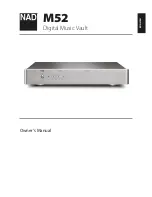
CPT Autopilot Operation Manual
© 2018 CPT AUTOPILOT INC.
VERSION 22
PAGE 11 OF 21
If the main is carried, there should be a poled-out foresail on the opposite side. If conditions put the boat on
the verge of broaching, the main should be dropped, or fall-off and change to a safer course. When it gets to
surfing conditions, a competent helmsman should be in charge. Generally, at slow vessel speeds the rudder is
less efficient and requires a higher rudder-control setting; higher speeds require a lower setting. Get to know
your vessel’s characteristics; there is usually an optimum vessel speed, course through seas, and amount of
canvas that best balances the boat to meet the wind and sea conditions.
D. Reaching
Twin poled-out jibs or a main and a poled-out jib can be used up to 30° to 40° off a dead downwind course.
(See the comments above on running.)
In high winds and particularly in gusting conditions, both sails must be sheeted looser than usual, or sail area
reduced. THE MAIN SHEET MUST BE EASED! If the boat still wants to head up at every gust, put a twist in
the main, reef it, or drop it.
Always rig a preventer to the boom when running or reaching in case of an accidental jibe.








































